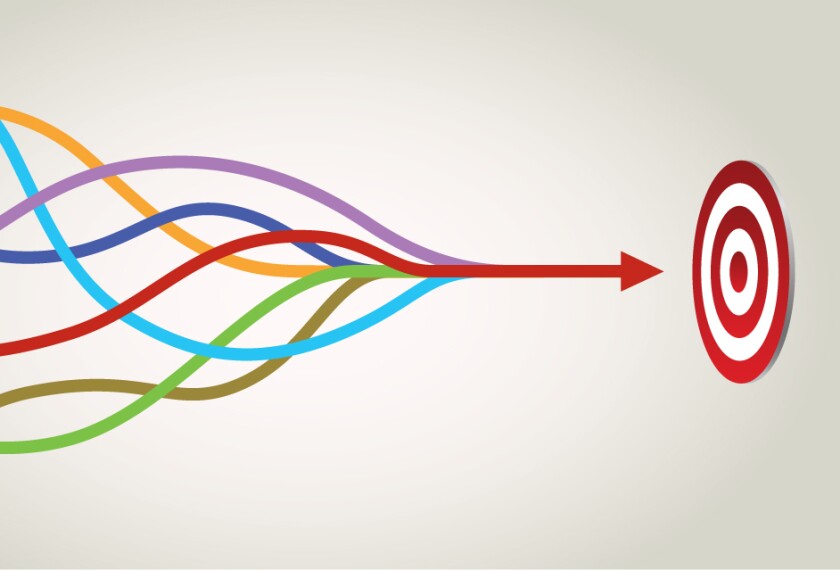In “Straight Talk with Rick and Jal,” Harvard University’s Jal Mehta and I examine some of the reforms, enthusiasms, and fads that permeate education. In a field with more than its share of vague buzzwords, happy-dappy constructs, and intimidating jargon, our goal is simple: Tell the truth, in plain English, about what’s being proposed and what it might mean for students, teachers, and parents. We may be wrong and will frequently disagree, but we’ll try to be candid and do our best to ensure you don’t need a Ph.D. in eduspeak to understand us.
Today’s topic is social-emotional learning (SEL).
—Rick
Jal: When Rick asked me to join him in a series focused on “straight talk,” the first topic I wanted to tackle was “social-emotional learning.” Rarely has there been a field with more jargon—trying to fit some desirable goals into categories and language that feels forced at best and false at worst.
Let’s stipulate from the start that the goals are worthy. To succeed in life, you need to be able to regulate your emotions, get along well with others, manage conflict, and develop executive functioning. As I watch my own kids, their ability to do these things is at least as important, perhaps more important, as their academic knowledge when it comes to how they are doing in school and, more importantly, how they are faring in life.
But why do we need to call this “social-emotional learning”? The term got popularized during the No Child Left Behind era, as advocates of more holistic education were looking for ways to put their concerns on par with reading and math. By calling these attributes a form of learning, it seemed to legitimate their status. What predictably followed were demands to build standards around social and emotional learning, with potential assessments to match. In other words, something that had just been part of the task of child rearing, shared between families and schools, had now become its own domain—with a language, advocacy organizations, funding streams, standards, and assessments.
There may be some advantages to this shift, which we can explore further. But I want to start with one cost—it makes it seem like social-emotional learning is somehow divorced from academic learning, and, as implemented in many schools, it means there is a small block devoted to social and emotional learning amid a school day where the rest of the time is for “academic learning.” As should be obvious, that’s not the best way to go; a better path is integration. The best classes reveal their values through the type of classroom community they create, through the kinds of tasks they ask students to do. Thus, they help students build such skills all the time, not just during the social-emotional learning block.
Rick: With SEL, I sometimes feel like we’re in the way-back machine talking teacher evaluation or Common Core. What I mean is that, while the idea makes good sense, I get nervous when the diehards and funders start molding it into a reform agenda and then yammering about its miraculous powers like they’re in a late-night infomercial.
For my part, it seems that you’re obviously right that good SEL is elemental to learning. I mean, it’s tough to succeed in any endeavor—including school—if you can’t manage your emotions, maintain positive relationships, set goals, or make responsible decisions. Frankly, it’s tough to imagine how this stuff ever got squeezed out of classrooms. Yet it did, especially during the No Child Left Behind and Common Core era.
And we’re lousy at incremental course correction. Ideally, as you suggest, we’d correct for this by weaving SEL back into the fabric of the school day. But the nature of school bureaucracies, teacher training, and school reform seems to demand that something be branded in order to get love, attention, and dollars. The advocates succeeded at building the SEL brand and were rewarded with dedicated time, trainings, and instruction.
One consequence of these “wins” was that it created incentive for vendors, academics, and advocates to start repackaging their wares and agendas so they could ride the SEL train. As I noted a few months back, that’s how you wind up with classroom pets marketed as an SEL intervention. This can also create a lot of ambiguity about what is or isn’t authentically “SEL,” which has helped turn SEL, like the Common Core before it, into a political football. When big-dollar consultants and credentialed authorities start insisting that SEL meant doing privilege walks or micro-aggression worksheets, lots of conservative parents and public officials start viewing it as a backdoor way for advocates to promote controversial ed. school ideologies.
So, I’d think your impulse to integrate SEL into classroom practice is a good one but wonder if SEL now has so much baggage and has so many hangers-on that doing so is extraordinarily difficult. What say you?
Jal: I agree with what you’ve said: As people attach other agendas to the favored term, the term itself loses some of its value.
I do think there is a better path forward, which is consistent with the themes of this column: Use real, nonjargony words that are specific and clear and connect to what you actually intend for students. Cooperation. Self-regulation. Executive functioning. Everyone knows what those words mean, and if you, as a teacher or a school, decide you want to work on one of those things, present the rationale for why and then try to be specific about what improvement might look like. If others disagree with those priorities, at least you can have an honest debate about it.
I also think it’s important not to shy away from the fact that we’re talking about critical questions of character formation. In today’s hyperpolarized political climate, one reason that social-emotional learning has come to the fore is that it tries to depoliticize questions of character and virtue. But no one is fooled, and the backlash you describe is evidence of that.
My colleague Ron Berger, who leads professional learning for Expeditionary Learning, has described working in red states and leading off by saying something like: “We probably disagree on a lot of things: gay marriage, gun control, abortion, and who we voted for in the last election. But I think students should be judged by the quality of their work and the quality of their character, and that’s what I’m here today to talk about. Honesty. Integrity. Responsibility. Respect. We may disagree about a lot of things, but I’m guessing that 99 percent of us want those things for our children.” I’ve seen him do this, and it enables a different level of work because it is clear we are talking about real and important things.
Rick: I love Berger’s framing. Five years ago, as the SEL push was heating up, CASEL President Tim Shriver and I made a similar point, observing that “since the dawn of the republic, teachers and schools have been tasked with teaching content and modeling character.” We suggested that SEL could be “an opportunity to focus on values and student needs that matter deeply to parents and unite Americans across the ideological spectrum—things like integrity, empathy, and responsible decisionmaking.”
If that’s what SEL actually entails, and if it’s explained and employed accordingly, I think it’ll enjoy widespread support and do much good. Unfortunately, as you note, one of the perils for every school reform that gains momentum is that it attracts charlatans, ideologues, and self-promoters seeking an opportunity to woo funders, bypass bureaucratic barriers, and make themselves relevant.
It’s crucial but extraordinarily tough for those driving the bandwagon to police who’s along for the ride. And because it’s such an unpleasant task, it rarely gets done. The result is that pretty much everyone who says their stuff is SEL is free to do so. And, in a field replete with junk science, shoddy vendors, and ideologically motivated authorities, a lot of dubious stuff gets adopted. The result is bad for kids and toxic for SEL as an enterprise.
This is why it’s crucial that SEL proponents explain what SEL is not, as much as what it is—with clarity and force. Which offerings don’t pass muster? Which assertions should or should not be regarded as responsible pedagogy? How can students and parents be confident that evidence-based practices truly are evidence-based? I think a little bit of this could go a long way in helping SEL deliver and in ameliorating skepticism and pushback.






